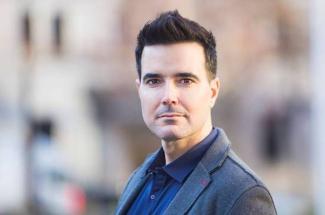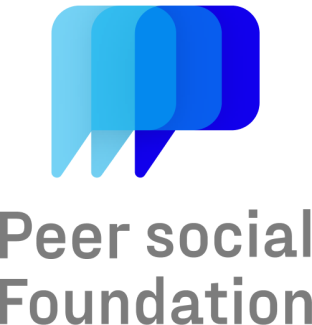INTRODUCTION:
The goal of the HLP partnership is to provide a decentralized solution to allow refugees and displaced people around the world to document their home, land, and property (HLP) in a self-sovereign, user-centric manner.
According to the United Nations High Commissioner for Refugees, there are an estimated 60 million people in the world who have been forced from their homes. As of September 30, 2021, approximately 59,000 individuals have applied to the Canadian government for refugee status. Many of these individuals are extremely vulnerable. Their vulnerable situation is exacerbated further by the fact that such individuals might have no documentation substantiating their claim of ownership to the assets they have left behind. Indeed, an estimated 54% of the world’s population lacks a property title, deed, rental contract, or any other documentary proof for their most valuable assets: their homes and their land. Even when property titles or deeds exist, the authenticity of such documentation might be difficult to establish, leading to disputed claims. The inability to provide proof of entitlement to HLP that has had to be abandoned can make it extremely difficult for such individuals to re-establish their lives in Canada or to resettle in their home countries when peace returns. Additionally, ongoing disputes over right of ownership of HLP can lead to tension between individuals who have had to flee and those who have remained behind and taken up occupancy of abandoned lands and property. This can make peace impossible to achieve in conflict-affected areas.
Efforts to address the need for proof of HLP often involve gathering documentation that is subsequently used in processes of transitional justice [1][2]. Such documentation might subsequently become “archives at risk” of destruction or alteration for several reasons, including conscious and unconscious acts, neglect, or storage in inappropriate conditions [3]. As an example, in January 2022, the International Committee of the Red Cross recently suffered a data breach of over 500,000 individual records from its global Red Cross and Red Crescent Movement's Restoring Family Links services. Recently, the ICRC has expressed concern about the data breach, which was an extreme violation of the privacy, safety, and right to receive humanitarian protection and assistance of extremely vulnerable people that included the names, locations, and contact information of missing people and their families, unaccompanied or separated children, detainees, and other people receiving services from the Red Cross and Red Crescent Movement as a result of armed conflict, natural disasters, or migration and login information for about 2,000 Red Cross and Red Crescent staff and volunteers. The ICRC has noted that the breach could lead to misuse of the stolen data by nation states and cybercriminals after hack [4].
Decentralized trust technologies, including blockchains and distributed ledgers, have the potential to provide better solutions to the safeguarding of the documentation of vulnerable populations of conflict-affected individuals. Some of the capabilities of these technologies that can make them an attractive option, as explored in the context of healthcare data privacy and security include that the data that is stored in a blockchains cannot be changed or deleted without detection (i.e., data are said to be “immutable”) [5]; blockchains’ decentralized architecture means that no central authority controls data access and storage [6]; and blockchains can enable individuals to retain possession of the private keys that control access to and use of their personal health data (sometimes referred to as “Self-Sovereign” data management, and often associated with the management of identity data, from which the moniker “Self-Sovereign Identity”, of SSI, is derived) [7]. Those involved in the protection of human rights have begun to notice the potential for using the use of blockchain and distributed ledger technology in capture and preservation of evidence of human rights violations [8].
In this year’s Block-a-thon for Social Good, which will be undertaken by distributed teams formed of students from UBC and HSLU (working synchronously from 8:00-10:00am PDT/17:00-19:00 CET and otherwise asynchronously), the goal will be to articulate a set of functional requirements for a decentralized solution to safeguard the HLP records of displaced peoples and present a blockchain/DLT solution design and, if possible, prototype implementation that meets the functional requirements.
BLOCKATHON PROCESS:
The Blockathon takes place Monday, July 18 to Friday, July 22, 2022 as the culmination of the 2-week Blockchain@UBC Summer Institute.
On the first day of the summer institute, students will be assigned by the course instructors to groups of four or five multidisciplinary teams based on their backgrounds/area of study. Students will be given time on the first day to get to know one another and to start to think about the Block-a-thon for Social Good..
Block-a-thon teams will take a design approach to put blockchain ideas to work on their solution design. Experienced blockchain mentors will be on hand to mentor the teams. Mentors will be available to participating teams during the Block-a-thon to offer advice and assistance on solution design and development.
On July 22, a panel of judges will evaluate each team’s submission and presentations according to the judging criteria. Students will also evaluate one another’s submissions.
Previous Blockchain@UBC Blockathons have tackled:
- UN SDGs
- Covid-19
- Powering the Electric Vehicle
- Blockchain Identity for the Homeless
- Improving and Expediting Real-World Biomedical Research
BACKGROUND INFORMATION & RESOURCES:
[1] United Nations, Food and Drug Administration et al (2007). Handbook on Housing and Property Restitution for Refugees and Displaced Persons: Implementing the ‘Pinheiro Principles’.
[2] Dubberley, S., Koenig, A., & Murray, D. (Eds.). (2020). Digital witness: Using open source information for human rights investigation, documentation, and accountability. Oxford University Press, USA.
[3] International Council on Archives (n.d.). Guiding Principles for Safe Havens for Archives at Risk. ICA.
[4] Greig, J. (2022, Jan. 24). Red Cross worried about misuse of stolen data by nation states and cybercriminals after hack. ZDNet.
[5] Ben Fekih, R., & Lahami, M. (2020, June). Application of blockchain technology in healthcare: a comprehensive study. In International Conference on Smart Homes and Health Telematics (pp. 268-276). Springer, Cham.
[6] Javed, I. T., Alharbi, F., Bellaj, B., Margaria, T., Crespi, N., & Qureshi, K. N. (2021, June). Health-ID: a blockchain-based decentralized identity management for remote healthcare. In Healthcare (Vol. 9, No. 6, p. 712). Multidisciplinary Digital Publishing Institute.
[7] Houtan, B., Hafid, A. S., & Makrakis, D. (2020). A survey on blockchain-based self-sovereign patient identity in healthcare. IEEE Access, 8, 90478-90494.
[8] Land, M. K., & Aronson, J. D. (Eds.). (2018). New technologies for human rights law and practice. Cambridge University Press.
[9] Lemieux, V. L., & Feng, C. (2021). Building Decentralized Trust. Springer International Publishing. https://doi.org/10.1007/978-3-030-54414-0.
[10] Palmer, C. K., Rowell, C., & Lemieux, V. L. (2021, March). Multidisciplinary Blockchain Research and Design: A Case Study in Moving from Theory to Pedagogy to Practice. In International Conference on Information (pp. 587-602). Springer, Cham.
[11] Ahmadbeigi, S. (2021). Trusted Records in the Tapestry Approach: A Background Study to Information System Design. ManyOne.
[12] Lemieux, V. (2015). Risk management (records). In Encyclopedia of archival science (pp. 366-370).
[13] Lemieux, V. L. (2017). Evaluating the use of blockchain in land transactions: An archival science perspective. European property law journal, 6(3), 392-440.
[14] Lemieux, V. L. (2016). Trusting records: is Blockchain technology the answer?. Records Management Journal. Vol. 26 No. 2, pp. 110-139. http://doi.org/10.1108/RMJ-12-2015-0042.
PARTERS:
The following partners are supporting the Block-a-thon 2022



